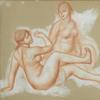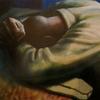The Art of Seating: 200 Years of American Design
- RICHMOND, Virginia
- /
- February 20, 2016
The newest addition to the Virginia Historical Society’s (VHS) selection of special exhibitions, The Art of Seating: 200 Years of American Design, will be on display February 20 – April 17, 2016.
Organized by the Museum of Contemporary Art, Jacksonville and the Thomas H. and Diane DeMell Jacobsen Ph.D. Foundation, The Art of Seating presents a survey of exceptional American chair design from the early nineteenth century to the present. The chair is experienced not only as a functional item but also as art.
The exhibition features forty-three chairs chosen for their beauty and historical context with important social, economic, political, and cultural influences. Selections from the Thomas H. and Diane DeMell Jacobsen Ph.D. Foundation join contemporary show-stoppers by John Henry Belter, George Hunzinger, Herter Brothers, Stickley Brothers, Frank Lloyd Wright, Ray and Charles Eames, Isamu Noguchi and Frank Gehry, among others. As an essential aspect of the domestic dynamic of everyday living, chairs play an underrated role in the understanding of the world’s history.
The chairs displayed in The Art of Seating are as diverse and distinctive as the eras in which they were produced. As different as they may be, they share characteristics that inform the viewer about life in America.
As advocates for preserving Virginia and American history, the VHS is excited to be adding The Art of Seating to its repertoire and “we look forward to discovering what visitors to the museum will be able to learn from this show about life and tastes in America—throughout the 1800s and the World War I era, as well as the decades in which we and our parents have lived,” said William Rasmussen, VHS Lead Curator. “Visitors will enjoy seeing the chairs in this groovy exhibit and they will make connections between design and the culture of an era. In some cases the aesthetic is a reflection of a time period, in others it is equally a reaction to social change,” said Paul Levengood, President and CEO of the VHS. “As years pass and society departs further from great moments in American history, we come to depend on objects such as chairs that were also present, to continue sharing history and discussion.”



__Portrait_of_a_Young_100x100_c.jpg)









31100x100_c.jpg)